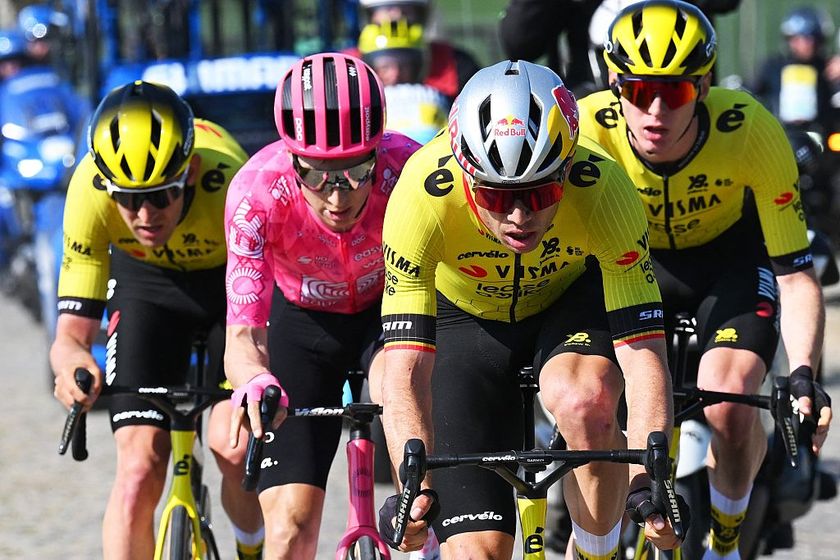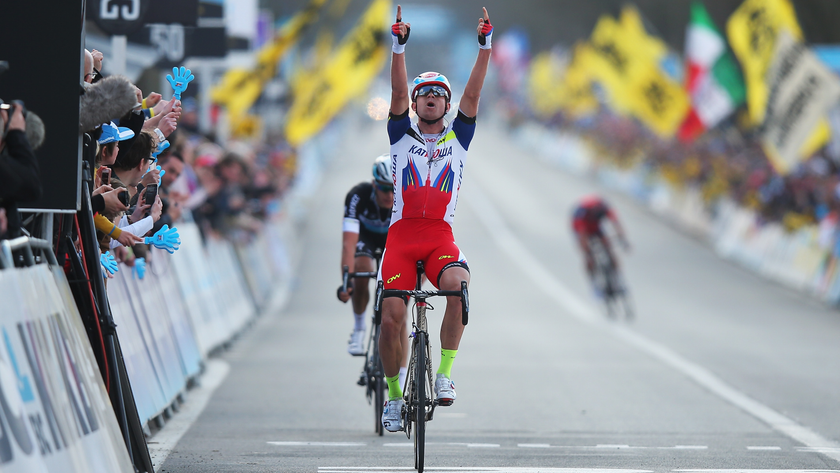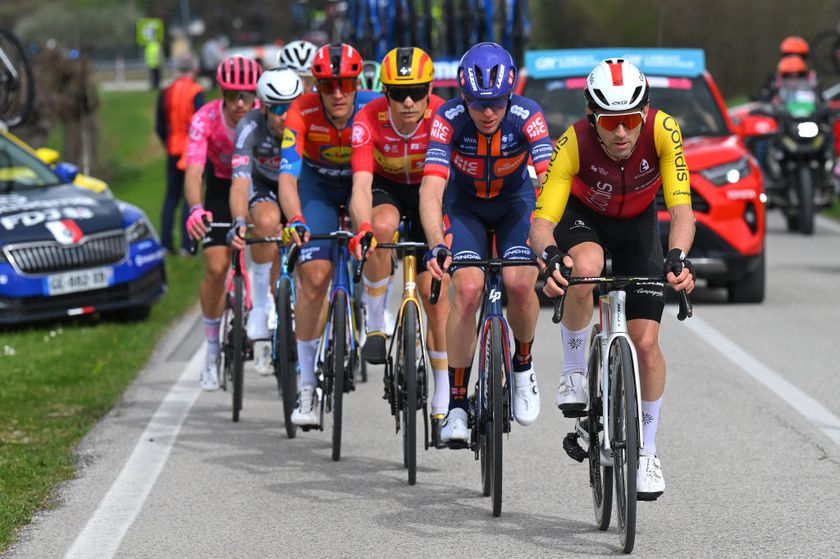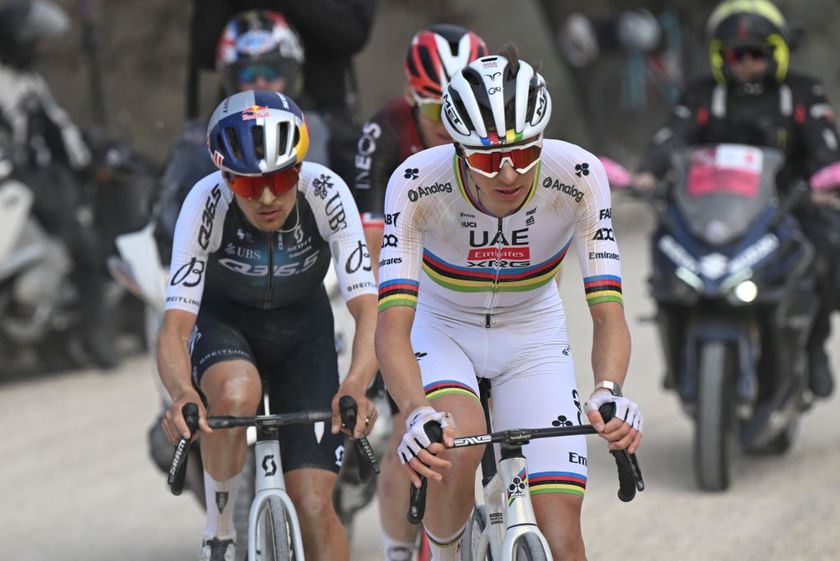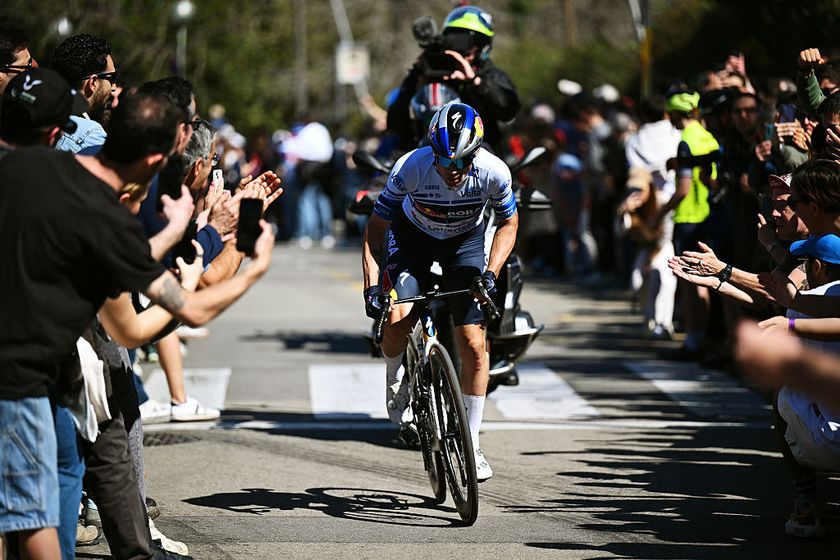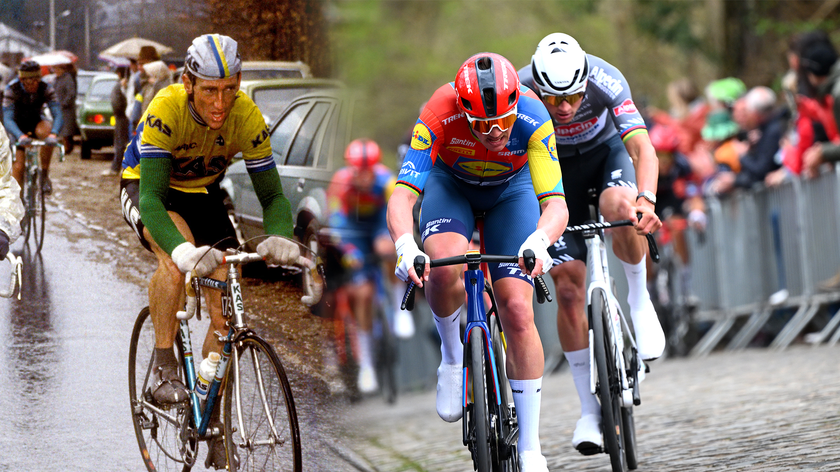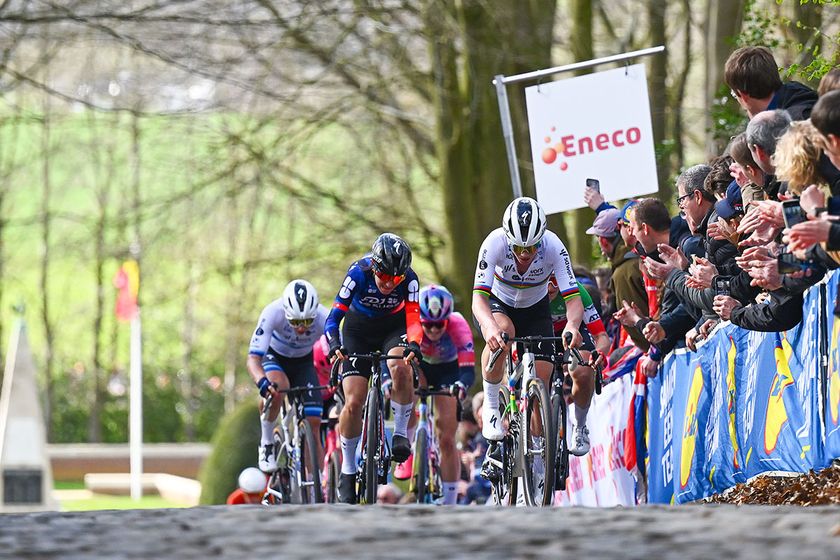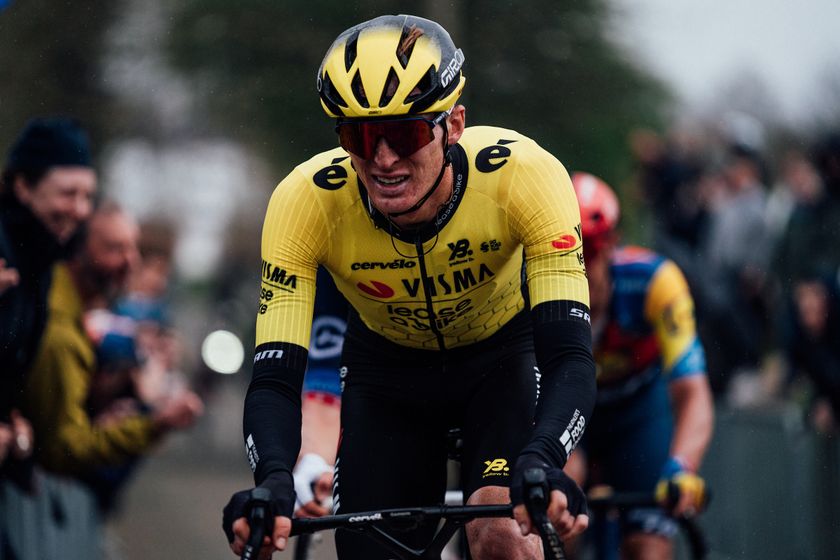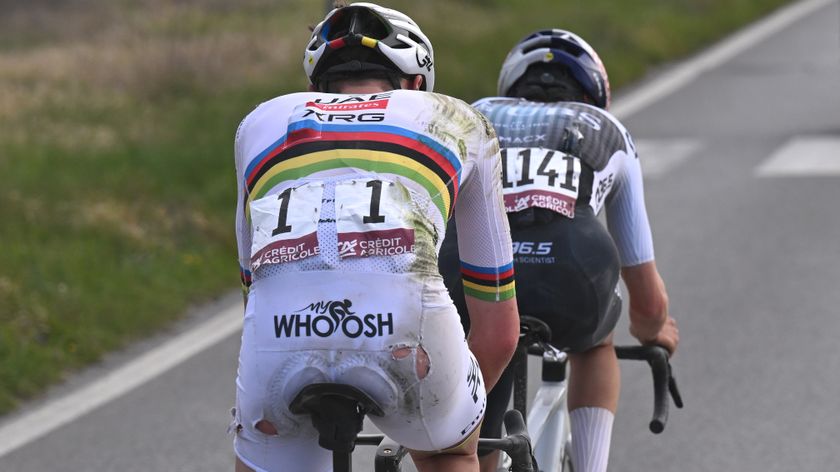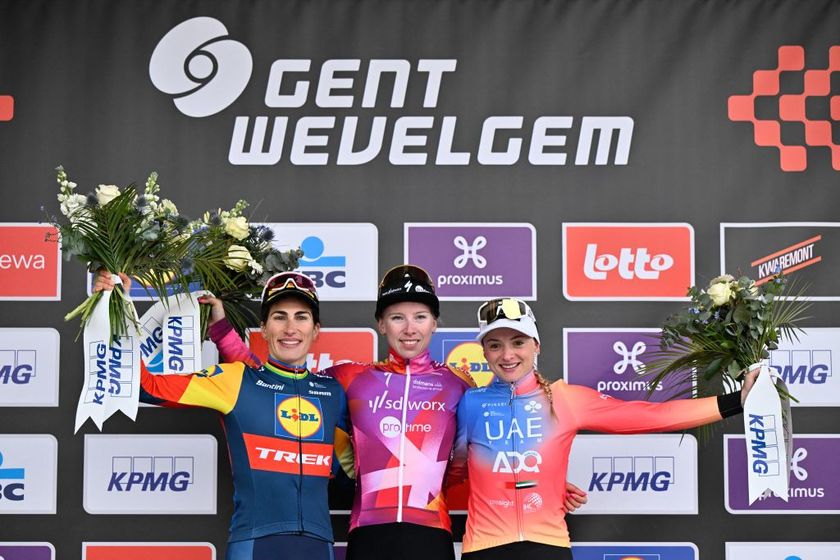Fitness questions and answers for February 14, 2005
Got a question about fitness, training, recovery from injury or a related subject? Drop us a line at...
Form & Fitness Q & A
Got a question about fitness, training, recovery from injury or a related subject? Drop us a line at fitness@cyclingnews.com. Please include as much information about yourself as possible, including your age, sex, and type of racing or riding. Due to the volume of questions we receive, we regret that we are unable to answer them all.
Carrie Cheadle, MA (www.carriecheadle.com) is a Sports Psychology consultant who has dedicated her career to helping athletes of all ages and abilities perform to their potential. Carrie specialises in working with cyclists, in disciplines ranging from track racing to mountain biking. She holds a bachelors degree in Psychology from Sonoma State University as well as a masters degree in Sport Psychology from John F. Kennedy University.
Dave Palese (www.davepalese.com) is a USA Cycling licensed coach and masters' class road racer with 16 years' race experience. He coaches racers and riders of all abilities from his home in southern Maine, USA, where he lives with his wife Sheryl, daughter Molly, and two cats, Miranda and Mu-Mu.
Kelby Bethards, MD received a Bachelor of Science in Electrical Engineering from Iowa State University (1994) before obtaining an M.D. from the University of Iowa College of Medicine in 2000. Has been a racing cyclist 'on and off' for 20 years, and when time allows, he races Cat 3 and 35+. He is a team physician for two local Ft Collins, CO, teams, and currently works Family Practice in multiple settings: rural, urgent care, inpatient and the like.
Fiona Lockhart (www.trainright.com) is a USA Cycling Expert Coach, and holds certifications from USA Weightlifting (Sports Performance Coach), the National Strength and Conditioning Association (Certified Strength and Conditioning Coach), and the National Academy for Sports Nutrition (Primary Sports Nutritionist). She is the Sports Science Editor for Carmichael Training Systems, and has been working in the strength and conditioning and endurance sports fields for over 10 years; she's also a competitive mountain biker.
Eddie Monnier (www.velo-fit.com) is a USA Cycling certified Elite Coach and a Category II racer. He holds undergraduate degrees in anthropology (with departmental honors) and philosophy from Emory University and an MBA from The Wharton School of Business.
Eddie is a proponent of training with power. He coaches cyclists (track, road and mountain bike) of all abilities and with wide ranging goals (with and without power meters). He uses internet tools to coach riders from any geography.
Get The Leadout Newsletter
The latest race content, interviews, features, reviews and expert buying guides, direct to your inbox!
David Fleckenstein, MPT (www.physiopt.com) is a physical therapist practicing in Boise, ID. His clients have included World and U.S. champions, Olympic athletes and numerous professional athletes. He received his B.S. in Biology/Genetics from Penn State and his Master's degree in Physical Therapy from Emory University. He specializes in manual medicine treatment and specific retraining of spine and joint stabilization musculature. He is a former Cat I road racer and Expert mountain biker.
Since 1986 Steve Hogg (www.cyclefitcentre.com) has owned and operated Pedal Pushers, a cycle shop specialising in rider positioning and custom bicycles. In that time he has positioned riders from all cycling disciplines and of all levels of ability with every concievable cycling problem.They include World and National champions at one end of the performance spectrum to amputees and people with disabilities at the other end.
Current riders that Steve has positioned include Davitamon-Lotto's Nick Gates, Discovery's Hayden Roulston, National Road Series champion, Jessica Ridder and National and State Time Trial champion, Peter Milostic.
Pamela Hinton has a bachelor's degree in Molecular Biology and a doctoral degree in Nutritional Sciences, both from the University of Wisconsin-Madison. She did postdoctoral training at Cornell University and is now an assistant professor of Nutritional Sciences at the University of Missouri-Columbia where she studies the effects of iron deficiency on adaptations to endurance training and the consequences of exercise-associated changes in menstrual function on bone health.
Pam was an All-American in track while at the UW. She started cycling competitively in 2003 and is the defending Missouri State Road Champion. Pam writes a nutrition column for Giana Roberge's Team Speed Queen Newsletter.
Dario Fredrick (www.wholeathlete.com) is an exercise physiologist and head coach for Whole Athlete™. He is a former category 1 & semi-pro MTB racer. Dario holds a masters degree in exercise science and a bachelors in sport psychology.
Scott Saifer (www.wenzelcoaching.com) has a Masters Degree in exercise physiology and sports psychology and has personally coached over 300 athletes of all levels in his 10 years of coaching with Wenzel Coaching.
Kendra Wenzel (www.wenzelcoaching.com) is a head coach with Wenzel Coaching with 17 years of racing and coaching experience and is coauthor of the book Bike Racing 101.
Steve Owens (www.coloradopremiertraining.com) is a USA Cycling certified coach, exercise physiologist and owner of Colorado Premier Training. Steve has worked with both the United States Olympic Committee and Guatemalan Olympic Committee as an Exercise Physiologist. He holds a B.S. in Exercise & Sports Science and currently works with multiple national champions, professionals and World Cup level cyclists.
Through his highly customized online training format, Steve and his handpicked team of coaches at Colorado Premier Training work with cyclists and multisport athletes around the world.
Brett Aitken (www.cycle2max.com) is a Sydney Olympic gold medalist. Born in Adelaide, Australia in 1971, Brett got into cycling through the cult sport of cycle speedway before crossing over into road and track racing. Since winning Olympic gold in the Madison with Scott McGrory, Brett has been working on his coaching business and his www.cycle2max.com website.
Richard Stern (www.cyclecoach.com) is Head Coach of Richard Stern Training, a Level 3 Coach with the Association of British Cycling Coaches, a Sports Scientist, and a writer. He has been professionally coaching cyclists and triathletes since 1998 at all levels from professional to recreational. He is a leading expert in coaching with power output and all power meters. Richard has been a competitive cyclist for 20 years
Andy Bloomer (www.cyclecoach.com) is an Associate Coach and sport scientist with Richard Stern Training. He is a member of the Association of British Cycling Coaches (ABCC) and a member of the British Association of Sport and Exercise Sciences (BASES). In his role as Exercise Physiologist at Staffordshire University Sports Performance Centre, he has conducted physiological testing and offered training and coaching advice to athletes from all sports for the past 4 years. Andy has been a competitive cyclist for many years.
Michael Smartt (www.cyclecoach.com) is an Associate Coach with Richard Stern Training. He holds a Masters degree in exercise physiology and is USA Cycling Expert Coach. Michael has been a competitive cyclist for over 10 years and has experience coaching road and off-road cyclists, triathletes and Paralympians.
Kim Morrow (www.elitefitcoach.com) has competed as a Professional Cyclist and Triathlete, is a certified USA Cycling Elite Coach, a 4-time U.S. Masters National Road Race Champion, and a Fitness Professional.
Her coaching group, eliteFITcoach, is based out of the Southeastern United States, although they coach athletes across North America. Kim also owns MyEnduranceCoach.com, a resource for cyclists, multisport athletes & endurance coaches around the globe, specializing in helping cycling and multisport athletes find a coach.
Creating meals that count
Crank Arm Length
Back pain solution
Saddle choice
Fit issues
Rollers vs. trainers
Creating meals that count
I just finished reading Pam Hinton's response to the Vitamin question from Jan 31st, 2005.
I tend to use vitamins and meal replacement shakes because I never make myself meals.
Would she have any suggestions on the Ultimate Cookbook for the male bachelor? Am I the only guy that doesn't know how to cook, has an empty fridge and pantry, and only eats what he can grab out of a box?
Heath
Pam Hinton replies:
The "Ultimate Cookbook" for the male bachelor? There's a plethora to choose from: Cooking for Dummies, Vegetarian Cooking for Dummies, Cast Iron Cooking for Dummies, Cooking with Spices for Dummies, Cooking with Kids for Dummies, Cooking Around the World All-in-One For Dummies, Pressure Cookers for Dummies. That should get you started. If I can learn to change a flat tire, switch out a cassette and adjust my rear derailleur then you can learn to cook.
Crank Arm Length
I am near in physical stature to this - male, 225lbs, 6'3'', 34" inseam, size 47 shoe, about 18" for hip to knee distance. I have wondered if I should/would be better off with a longer crank though I like to spin. I am running 175mm cranks now and typically spin 100-110rpm.
Ramin Bledsoe
Steve Hogg replies:
G'day Ramin,
There is a school of thought that the ideal crank length is 0.216 of inseam length. If applied, this means that most small people are riding somewhere near their " correct " crank length while tall people such as yourself are riding " short " cranks in a proportional sense. An American named Ron Haney has taken this idea of crank length much further in terms of acquiring knowledge through his own research than anyone I am aware of. Ron does not necessarily believe in inseam x0.216 but finds that it is somewhere about right for a majority of people.
Eddie Monnier replies:
Given your inseam length and preference to spin, I would suggest keeping your 175 mm cranks.
Back pain solution
In response to several letters you've run recently on back pain, I have found that the thing that works most effectively for me is doing strength exercises. Back extensions, dead lifts, and good mornings done on a regular basis pretty much eliminates any pain I have experienced.
Kevin Earls
Somerville, MA USA
Dave Fleckenstein replies:
Kevin,
Saddle choice
Saddle choice is, of course, a very personal thing. However, it seems that most new saddles being developed these days are mainly flat rather than the more classic curved shapes like the Turbomatic range so the choices are being made by the manufacturers. An exception to this is the much lauded Fizik Aliante which replicates the Turbomatic shape almost to the millimetre when you put them side by side. The Turbomatic is one of the most popular saddles ever in the pro ranks and never gets a bad review (other than it's weight). In fact, in customer and magazine reviews both these saddles seem to be at the top of the pile in terms of comfort. For example, on www.roadbikereview.com the ever-popular Flite gets an average rating of 3.38/5 whereas the Turbomatic is the only saddle to receive and average score of 5/5.
If these curved saddles are so comfortable for so many why are they rarely made nowadays? Other than a flat saddle having more positions, if you don't tend to move around much is there any other performance reason why a flat saddle is better than a curved one or is it, as I would suspect, simply a case of whatever works for you?
I am on a Flite, which is only barely acceptable in terms of comfort to me and have tried the Arione, which also doesn't suit, so I am thinking of taking the plunge into the world of curved saddles - it may hold me in the sweet spot better. I have tried every possible combination of settings for both saddles.
Simon Quirk
London
Steve Hogg replies:
I understand what you are saying and largely agree, but contrary to what you are saying, the basic Flite does have a noticeable dip in it as does the Arione that you have found not to your liking. Some of the more padded versions of Flites, like the Trans Am and Gelflow make the dip less apparent, but the underlying shell is the same, with or without a perineal cut out. The Aliante is actually based on Giro's Vitesse ladies seat. A few years ago, the manufacturer noticed a number of road pros using Vitesses in the Vuelta. Subsequently they used that same shell shape in lighter material along with lighter rails and came up with the Aliante. I prefer seats with a dip too, but have found some with too much of a dip. By this I mean that the rear of the seat tips forward too steeply and the riders pelvis is tipped forward, pushing the perineum against the rise out of the dip at the front.
Simon responded:
Last year I was suffering a lot from perineum pain and ended up with a Flite Max Trans Am which was just bearable with the cut out. After reading some of your advice I worked out that the problem was not the seats but how I was sitting on them. I had too much reach and my hips were rolling forward so that I was balancing on the small pelvic bones in between the legs rather than the sit bones. Ouch! In that way I was also not utilising my glutes properly either. So, I shortened the reach and got some pliates exercises form my physio to correct my hip position and I now sit at the back of my seat which has made a big difference to comfort and feel. I am definitely going to build on the pilates as I feel it provides me with a much stronger pedalling position. Incidentally, as well as sitting at the back of the seat now I have also moved the seat back 0.5 cm. I think the combination puts me about -1.5 cm KOPS and it feels much better. Thanks for letting us know that KOPS is a guide only!
I have just the past two days been trying the Aliante and Turbomatic. I agree with you about too much dip. I always thought that given my perineum problems that I would never be suited to a saddle with dip. The dip on the Aliante is slightly more pronounced than the Turbo and I find it a little bit tight - there is perineum pressure no matter what level the nose is: it is either sticking up too far or if you angle the nose down you slide down the ramp at the back and it is worse. However, the Turbomatic feels really, really good on the sit bones which is, as you say, critical.
The Max Flite and Pro Link are too wide for me and I sit on top of them where as because the Turbomatic is less flat and the width is right at the back I feel that I can get to the back of the saddle and still pedal comfortably and freely and the nose doesn't really curl up until 2/3 towards the front where you don't sit. Also, one thing that a curved saddle does is provide you with a reference point so that you know where you are on the saddle which I quite like - you can feel for the sweet spot. I also like the firmer shape - the Aliante was a little squishy for me. So, although I need to put in some more miles on it I think I might have found my saddle (although I will try the SLR Trans Am as well). It is heavy and discontinued by Selle Italia but I think I may have to stock up for the years ahead and find some weight saving elsewhere. Am I mad to go for an old saddle like this one when everything else on my good bike is cutting edge? I notice that a heap of the pros on the SI teams use Turbomatics so there must be something in the shape.
Steve Hogg replies:
A rider's best friend is a comfortable seat. I get a lot of people asking seat advice in the shop and the best advice I have is what you have indicated you are doing. Find what you are happy with and if the manufacturer discontinues them, buy a few for the years ahead. A heavy comfortable seat will contribute more to performance than a lighter less comfortable seat. Ideally, we should all look for a light comfortable seat and many can find this, but bottom line is comfort wins every time and aids performance. That is why a fair number of pros ride heavier seats.
Fit issues
I am a male cyclist living in California, 36 years of age and am getting back into racing after quite a long layoff. During the past year, I have been training for racing, but am having positioning problems with my current road bicycle. One thing I noticed is that, although my height is 5'11", my wingspan is 6'2". Although I have a 57cm top tube with a 120 mm long stem, I am constantly trying to find a comfortable hand position on the bars. I have raised and lowered my bars numerous times, but I still have hand numbness and pain on almost every ride. In addition, I have horrible adductor pain in both legs on almost every ride I'm on. I constantly feel like I'm fighting with the saddle - trying to find a comfortable position - most of the time, I feel like I'm pushing my rear end over the back of the saddle. Although I've changed the saddle and the saddle height numerous times, I still can't seem to find a comfortable riding position. During 40-50 mile long rides, I need to stop at least twice in order to stretch my hamstrings/adductors and relieve the pressure on my hands. Any ideas on what I can do in order to stop the Adductor pain and hand numbness? Does it sound like my reach may be too short for my wingspan? And is there a correlation between the two - if I have too short of a reach to the bars, is this a possible cause of the adductor pain? Thanks for your help!
Rodney Cox
Chico, CA
Steve Hogg replies:
A 'wingspan' as you term it of 6' 2" for your height could indicate longer than average arms, but equally it could indicate broad shoulders. It is unlikely based on what you have said, that arm length is your problem. Pelvic stability on the seat certainly is though. Go back through the archive and look at any posts in the last seven or eight months about numb hands, bike fit, seat height or position, cleat position etc. The hand numbness is caused either by a seat that is too far forward transferring your weight onto the upper body, that then has to be supported by the arms and/or bars that are too low or too far away.
Rodney then asked:
Thank you very much for the information. Yes, I have been having all kinds of trouble on the bike during this past year. I just can't seem to get comfortable. I went through the last year or so on your archive looking for the posts on hand numbness and adductor soreness - that's what led me to conclude that there might be a correlation between the two problems. However, maybe not. I have my seat slammed all the way back - it's been like that for more than a year now. I ride a LeMond frame too, so the seat angle is pretty slack as well (72.5 degrees). However, I still have quite a bit of pressure on my hands/wrists from the bars. Not only that, but many times I feel like I need to ride with my butt hanging over the back of the saddle - and at times, I feel like I might even slide completely off the back end of it! Although the saddle is completely level - no downward or upward tilt to it - I still can't seem to get comfortable...even with different saddles. And the adductor pain and hand numbness are equally prevalent on both sides...no one side hurts more than the other. Do you think, after having a professional look at my position on the bicycle, that increasing the reach to the bars (longer top tube/longer stem) might relieve any of these problems? I'll try lowering the saddle a bit too to see if that helps.
Thank you for all of your help Steve - I really appreciate it!
Steve Hogg replies:
Another possibility that occurs to me is that given you have issues with stability on the seat, you may be enlisting the arms and shoulder complex in an effort to brace against the movement of your butt laterally. The first priority is to solve the adductor issue. That and the hand numbness may be linked, equally they may not be. Your effective seat tube angle is 71.5 degrees with where you have the seat assuming you use a standard offset post. You may need to be further back. Equally as you suggest, it may be that you need a longer stem. You should have read in the archives about the 'balance test'. Can you pass that? If not, then either your pelvic function is severely compromised or the seat is not far enough back. If you want to try moving further back, the FSA SL 220, FSA K - Force carbon and the Selcof Bi-Position are the best posts out there in terms of extra offset of the seat rail clamp. All offer about 20-22 mm more than standard. If you can pass the balance test then the solution is to either raise your bars or lengthen the stem or perhaps both. If your upper body is too far over the bars your arms will have to support that weight, even is it is not a lot at an unfavourable angle. If you have any more than slight perineal pressure, raise the nose of the seat 1 - 2 degrees. This will help. Dial gauge angle finders are available at most hardware stores here, so I assume the same in the States. As I said before, the first order of business is to have that structural assessment so you know what the state of play is. Scott Saifer, one of the panellists is in California as I see you are. He does a bit of rider positioning too. I am copying him this email. If you get stuck and are not making progress with your issues, you could do a lot worse than to contact him via this forum with a view to having him have a look at you.
Rollers vs. trainers
Can you give summary of what you see as the advantages and disadvantages of using rollers vs. trainers for winter indoor training? Also, I have heard that hooking a bike up to a trainer can be hard on the fatigue life of the bike's frame. Is there any truth to that?
I ride for fitness and fun and manage about 4500kms a year split between commuting and touring in the Rockies.
John-Paul Wolff
Calgary, Alberta, Canada
Eddie Monnier replies:
J-P
